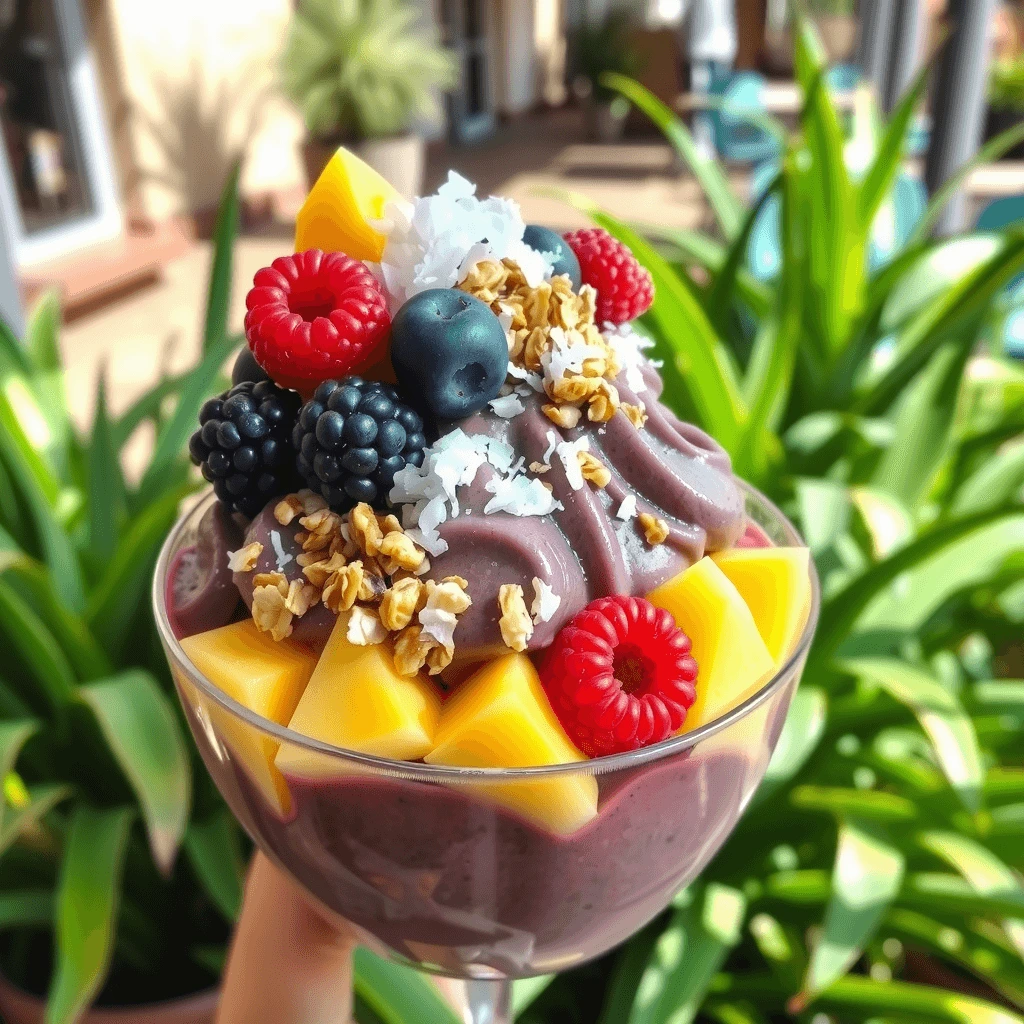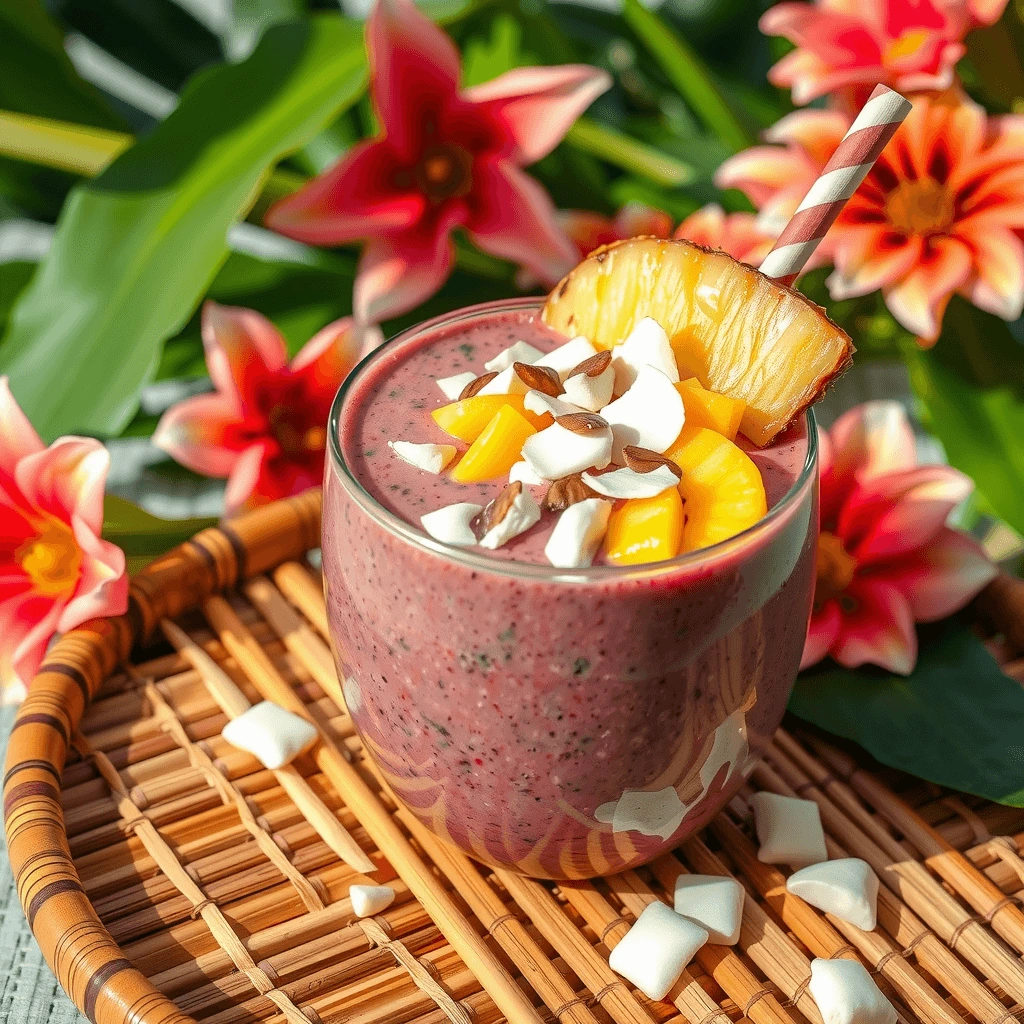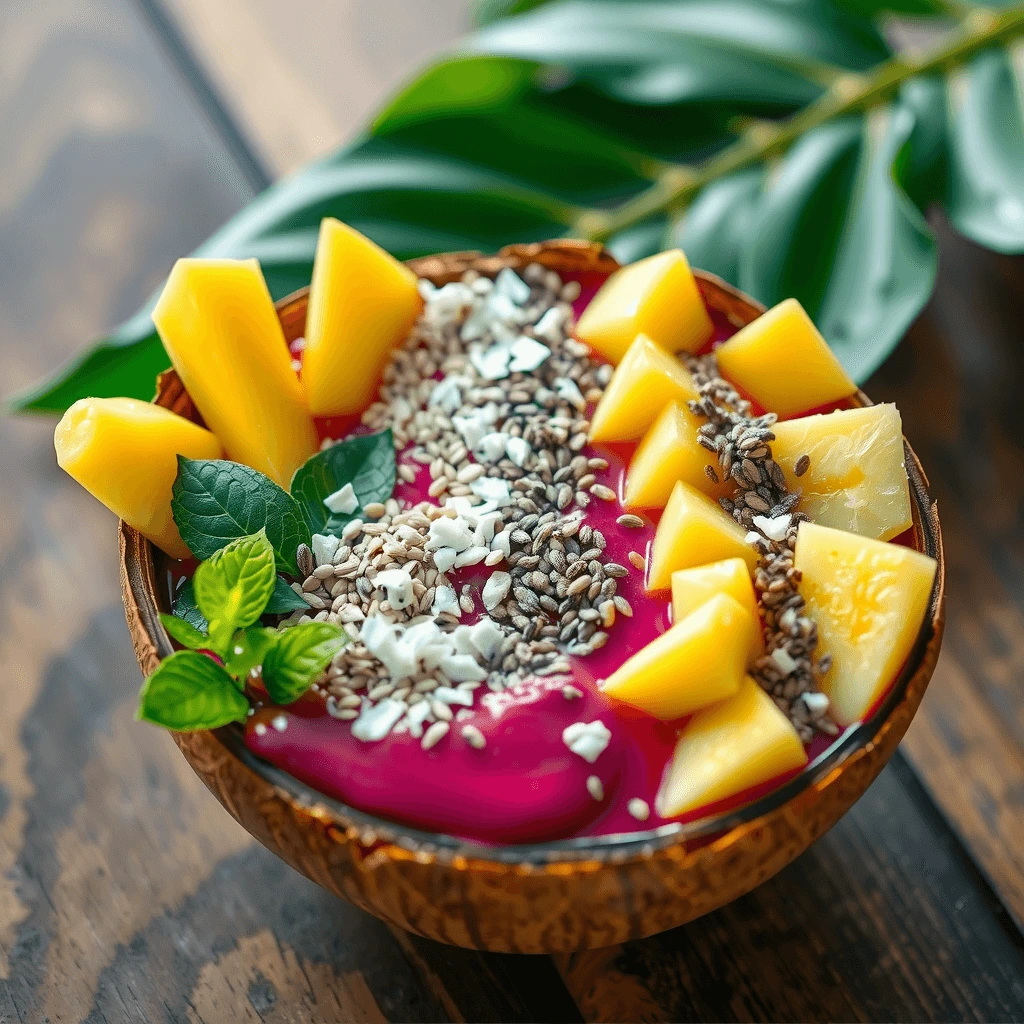Imagine this: the morning sun filters through your window, and you’re craving something bright, refreshing, and wholesome, but your schedule’s tight. Enter the tropical smoothie acai bowl: a rainbow in a bowl that lifts your mood and fuels your day in just minutes. You’re about to discover how simple it is to blow your own mind, and your taste buds, with a quick, vibrant, healthy start.
What Is a Tropical Smoothie Acai Bowl, And Why You’ll Love It
You might already know acai from Instagram feeds or health‑food chatter. It’s the jewel of the Amazon, prized for its antioxidant punch. But when you pair it with tropical fruits, like juicy mango, tangy pineapple, creamy banana, it blossoms into something beautifully balanced: a sweet, zesty, creamy delight that wakes up your senses.
Why this combo works so well:
- Pure, radiant flavor: The rich, earthiness of acai meets sugary mango and pineapple in perfect harmony.
- Fast nourishment: Nutrient‑dense, fiber‑rich, and hydrating all at once.
- Mood‑lifting color: That sunny purple hues just makes you smile, and maybe even feel like you’re on a mini vacation.
In other words, you get a bowl that’s as good for your energy and wellness as it is for your eyes and soul.
What You’ll Need: Ingredients & Equipment

Ingredients for your Tropical Smoothie Acai Bowl
Here’s a simple ingredients table to keep you perfectly organized:
| Ingredient | Amount | Why You Want It |
| Frozen acai puree | 1 packet | Powerful antioxidants, stunning color |
| Frozen mango chunks | ½ cup | Sweet, vitamin C–rich tropical zest |
| Frozen pineapple | ½ cup | Adds brightness and digestive enzymes |
| Banana (fresh/frozen) | 1 medium | Smooth texture, potassium, natural creaminess |
| Coconut water / almond milk | ½ cup | Hydration, light base to ease blending |
| Honey or agave (optional) | 1 tsp | Gentle, natural sweetness if needed |
Tools You’ll Use
You don’t need a laundry list here, just:
- A high‑speed blender (great for handling frozen fruit)
- A spatula to coax everything out
- A bowl and spoon for serving
- Optional extras: smoothie bowl molds or decorative kits, if you want to jazz up the final look
Step‑by‑Step: How to Make It in Under 10 Minutes
You’re just three simple steps away from bowl bliss.
1. Prep Your Ingredients (2 minutes)
- Store your fruits in the freezer ahead of time to avoid waiting for them to cool when you need them.
- Slice your banana ahead of time and stash it frozen if you enjoy creamy texture with less prep.
- Pull an acai pack from the freezer now, you’ll thank yourself later.
2. Blend the Base (4–5 minutes)
- Into the blender, drop your acai packet, frozen mango, pineapple, banana, and your chosen liquid.
- Pulse to break up the chunks, then blend until it’s thick and creamy.
- If it feels too stiff, add tiny sips of liquid, just enough to get things moving without turning soupy.
- Stop early, stir with the spatula, then blend again for an even, velvety mixture.
3. Pour and Decorate (2–3 minutes)
Add your smoothie base to a bowl and get creative with your toppings:
- Outline toppings in concentric circles or clusters for visual drama.
- Sprinkle on granola for my crunchy contrast.
- Add fresh berries, kiwi slices, shredded coconut, chia or flaxseeds.
- Top it off with a swirl of nut butter or honey for the perfect final touch.
- Use contrast: bright reds or greens cheer up the deep purple acai base.
Pro Tips to Elevate Your Game
You’ve nailed the basics, now let’s turn your bowl into a standout.
Customize for Your Needs
- Vegan‑friendly: Stick with plant‑based milk and skip honey (or swap for agave).
- Protein boost: Stir in a scoop of protein powder or swirl in Greek yogurt.
- Low‑carb twist: Use a smaller banana, or none, and add avocado for creaminess plus healthy fats.
Avoid Common Slip‑Ups
- Too much liquid? Your bowl will look more like pudding. Add just enough to blend.
- Overloaded toppings? Too many sugary add‑ons can turn this wholesome bowl into dessert town.
- Wimpy blender? If yours struggles, chop frozen fruit slightly or let everything soften a minute before blending.
Nutritional Snapshot (Approximate, Per Serving)

| Nutrient | Approximate Amount | What It Does for You |
| Calories | 250–350 | Energizes without weighing you down |
| Protein | 3–5g (more if added) | Aids muscle repair, keeps hunger in check |
| Fiber | 7–10g | Supports digestion and satiety |
| Natural Sugar | ~15–20g | Provides clean, sustained energy |
| Healthy Fats | 5–10g (from toppings) | Keeps you full and supports nutrient release |
FAQ: Everything You Want to Know
Are tropical smoothie acai bowls genuinely healthy?
Yes. Using wholesome ingredients and simple, nutrient-rich toppings turns your bowl into a powerhouse of antioxidants, fiber, vitamins, and healthy fats. It nourishes you mindfully, rather than dumping loads of sugar into your day.
Can I make this bowl without a blender?
It’s tough without one. A high-speed blender makes all the difference, the creamy base, the vibrant color, the perfect scoopability. If you don’t have one, a trusty food processor might do the job, though the blend may be less silky.
How should I store any leftovers?
Best to prep fresh. But if you must keep some:
- Seal it airtight and freeze.
- When you’re ready, thaw slightly or toss it into the blender for a quick re-whip.
What makes the bowl “tropical”?
It’s all about flavor profiles! Think sunshine fruits, mango, pineapple, coconut, banana. They add sweetness, zest, and that breezy summer feel, alongside the acai’s deep, rich purple base.
Conclusion: Your Tropical Escape in a Bowl
You just traveled somewhere warm and gloriously colorful with just three minutes of blending. Who thought feeling good could be this tasty, this joyful, and this quick?
Crafting your own tropical smoothie acai bowl is an invitation, to treat yourself, to play with flavor, to feed your body in a balanced, joyful way. And best of all? It’s fast.
Your challenge: Grab that blender and create your own bowl of sunshine tomorrow morning. Share your colors, your textures, your unique topping combos, let’s see how your bowl turns out!
LEAVE A COMMENT
There are no reviews yet. Be the first one to write one.

